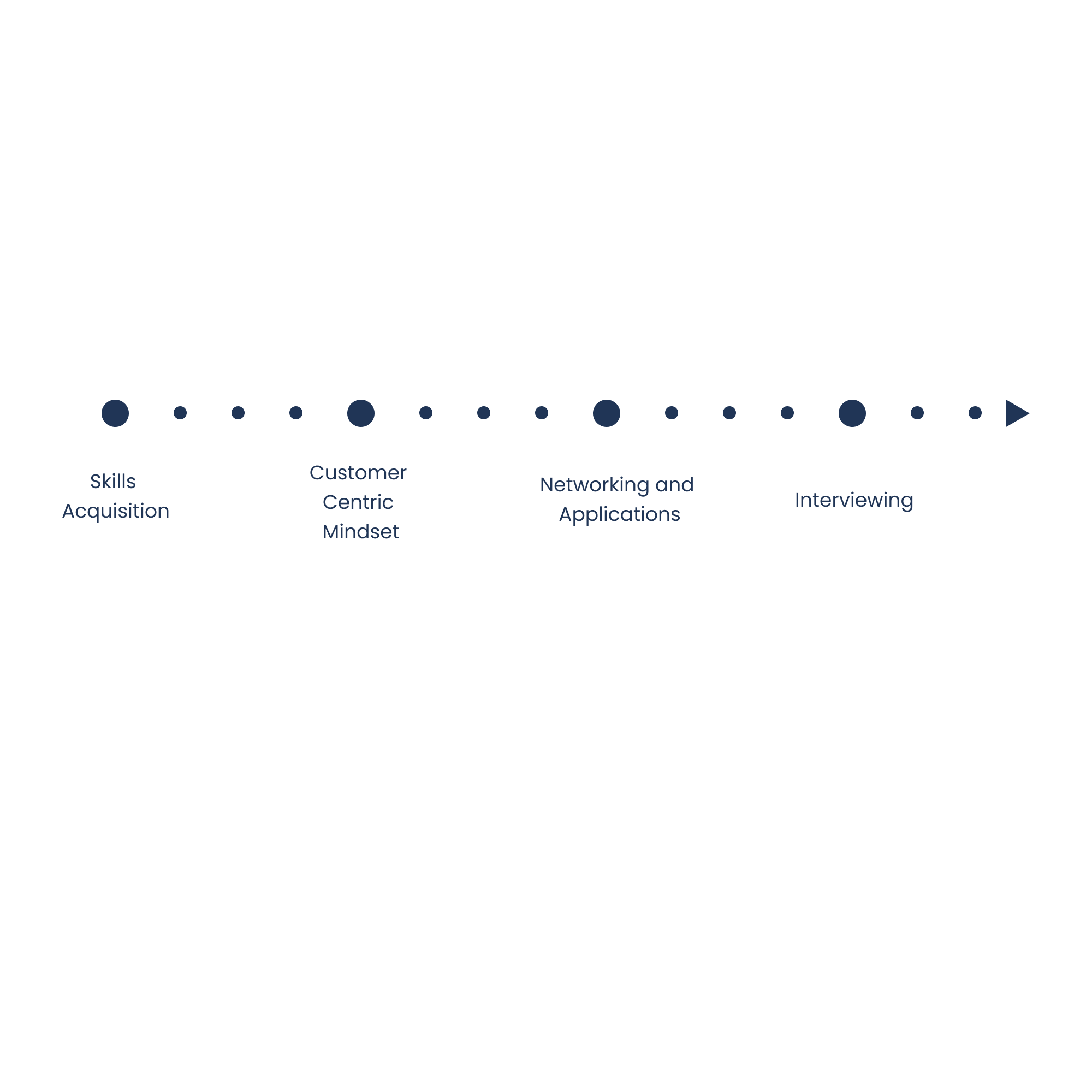
Sure, here’s a more detailed version of the blog post on how to transition to a product manager role, with more examples and insights, ensuring it has no less than 2000 words.
As technology continues to evolve and become an essential aspect of modern life, the need for skilled product managers has increased. Product managers play a crucial role in ensuring that technology products meet user needs, are delivered on time, and meet business goals. For individuals interested in transitioning into a product manager role, there are specific skills that they need to acquire, books or courses to take, and tips for creating a product manager CV and finding their first product manager role.
Skills Required for a Product Manager Role
Product management is a multidisciplinary field that requires various skills to succeed. Some of the skills required for a product manager role include:
Analytical skills: Product managers should be analytical and have the ability to analyze data and make informed decisions. They should have a thorough understanding of product metrics and analytics tools.
Product managers need to have an analytical mindset to assess the performance of their products, identify trends, and make informed decisions based on data. They need to have a deep understanding of metrics such as user engagement, acquisition, retention, and revenue and be able to use analytics tools such as Google Analytics, Mixpanel, or Amplitude to monitor and analyze their products’ performance.
Communication skills: Product managers should have excellent communication skills, both verbal and written. They should be able to communicate effectively with cross-functional teams, stakeholders, and customers.
Product managers need to communicate effectively with different stakeholders, including designers, developers, marketers, executives, and customers. They should be able to articulate the product vision, strategy, and roadmap to their teams and ensure everyone is aligned toward achieving the product goals. They should be able to listen actively to feedback and insights from customers and incorporate them into the product roadmap. They should be able to present their ideas and insights convincingly to stakeholders and executives and gain their buy-in.
Leadership skills: Product managers should have excellent leadership skills, including the ability to motivate and inspire cross-functional teams toward achieving product goals.
Product managers need to lead cross-functional teams that include designers, developers, marketers, and other stakeholders. They need to create a shared vision of the product and inspire their teams towards achieving it. They need to foster a culture of collaboration, trust, and accountability and ensure that everyone is aligned toward the same goals. They need to lead by example and demonstrate the values and behaviors that they expect from their teams.
Technical skills: Product managers should have a good understanding of technology and software development processes. They should be able to work closely with developers to ensure that products meet technical requirements.
Product managers need to have a basic understanding of software development processes, such as agile or scrum methodologies and be able to work closely with developers to ensure that products meet technical requirements. They need to be able to speak the language of developers and understand the technical constraints and opportunities that affect the product roadmap. They need to be able to prioritize technical debt and ensure that the product’s architecture and infrastructure can scale and evolve over time.
Product vision and strategy skills: Product managers should have the ability to develop a product vision and strategy that aligns with business goals and user needs.
Product managers need to have a clear product vision and strategy that defines the product’s purpose, goals, and roadmap. They need to understand the market trends, customer needs, and business goals and translate them into a compelling product vision and strategy. They need to ensure that the product roadmap aligns with the business goals and provides value to the users.
Customer-centricity skills: Product managers should have a deep understanding of customer needs and be able to develop products that meet those needs.
Product managers
need to have a customer-centric mindset and be able to empathize with their users. They should conduct user research, gather feedback, and use data to understand their users’ needs, pain points, and behaviors. They should be able to develop user personas and customer journey maps that capture the user’s experience with the product. They should prioritize user feedback and insights and use them to improve the product’s features and functionality continuously.
Acquiring the Skills Required for a Product Manager Role
Acquiring the skills required for a product manager role can be challenging, but there are several ways to do it. Here are some ways to acquire the skills required for a product manager role:
Take online courses: There are several online courses on product management that individuals can take. Some popular courses include:
- Product Management Fundamentals by Product School
- Product Management Essentials by UC Berkeley Extension
- Product Management Certificate by General Assembly
These courses cover various aspects of product management, including product strategy, user research, product design, and product development.
Read books on product management: Reading books on product management can provide individuals with a deep understanding of the field. Some popular books include:
- “Inspired: How to Create Products Customers Love” by Marty Cagan
- “Cracking the PM Interview” by Gayle McDowell and Jackie Bavaro
- “The Lean Product Playbook: How to Innovate with Minimum Viable Products and Rapid Customer Feedback” by Dan Olsen
These books cover various aspects of product management, including product strategy, user research, product design, and product development.
Shadow a product manager: Shadowing a product manager can provide individuals with hands-on experience in product management. Individuals can volunteer to assist a product manager or find a mentor who can guide them through the process. Shadowing can provide insights into the day-to-day tasks of a product manager, including managing cross-functional teams, conducting user research, developing a product roadmap, and analyzing product metrics.
Attend product management events: Attending product management events can provide individuals with networking opportunities and insights into the latest trends in product management. Some popular events include:
- ProductCon by Product School
- Mind the Product Conference
- ProductTank Meetups
Creating a Product Manager CV
Creating a product manager CV that stands out can increase the chances of finding a product manager role. Here are some tips for creating a product manager CV:
Highlight relevant experience: Highlighting relevant experience can demonstrate that individuals have the skills required for a product manager role. Individuals can highlight previous roles that involve product management, such as project management, business analysis, or user experience design.
Highlight relevant skills: Highlighting relevant skills can demonstrate that individuals have the skills required for a product manager role. Individuals can highlight skills such as analytical skills, communication skills, leadership skills, technical skills, product vision and strategy skills, and customer-centricity skills.
Quantify achievements: Quantifying achievements can demonstrate the impact that individuals have made in their previous roles. Individuals can use metrics such as revenue growth, customer satisfaction, or user engagement to demonstrate their achievements.
Finding Your First Product Manager Role
Finding the first product manager role can be challenging, but there are several ways to do it. Here are some ways to find your first product manager role:
Apply to job postings: Individuals can search for product manager job postings on job boards such as LinkedIn, Indeed, or Glassdoor. They should tailor their application to the job description and highlight their relevant skills and experience.
Network with recruiters and product managers: Networking with recruiters and product managers can increase the chances of finding a product manager role. Individuals can attend product management events, join product management groups on social media, and connect with recruiters and product managers on LinkedIn.
Leverage personal connections: Leveraging personal connections can also be helpful in finding a product manager role. Individuals can reach out to friends, family, and colleagues to see if they know of any product manager roles that are available or can provide a referral.
Build a portfolio: Building a portfolio can demonstrate individuals’ skills and experience in product management. Individuals can showcase their previous projects, including product roadmaps, user personas, and customer journey maps. They can also include case studies that highlight their impact on previous roles.
Consider internships or apprenticeships: Internships or apprenticeships can provide individuals with hands-on experience in product management. They can gain experience working with a product manager and learn the skills required for the role. This can increase their chances of finding a full-time product manager role in the future.
Conclusion
Transitioning to a product manager role can be challenging, but it is possible with the right skills and experience. Individuals should focus on acquiring the skills required for the role, including product strategy, user research, product design, and product development. They should also develop a customer-centric mindset and be able to empathize with their users. Creating a product manager CV that highlights relevant experience, skills, and achievements can increase the chances of finding a product manager role. Finally, individuals can find their first product manager role by applying to job postings, networking with recruiters and product managers, leveraging personal connections, building a portfolio, and considering internships or apprenticeships. With persistence and dedication, individuals can successfully transition to a product manager role and build a rewarding career in product management.



